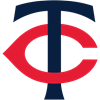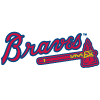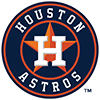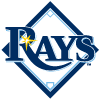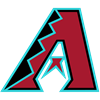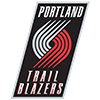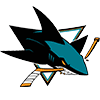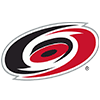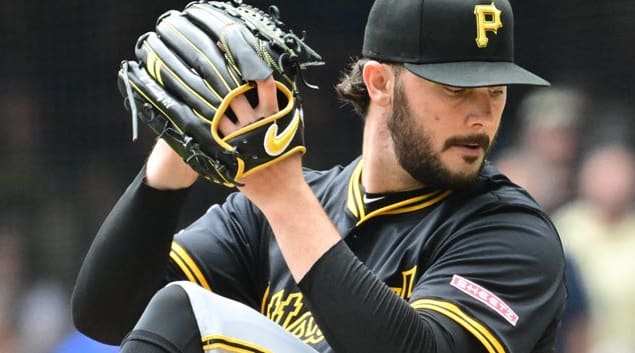With the season more than a quarter over and trade talks heating up all over the fantasy world, it's just about time to make The Decision with your keeper or dynasty team(s). You know which decision I mean. Are you going for a title this season, or are you folding up your 2018 tent and accumulating assets for 2019 and beyond?
If you're cruising along at the top of the standings, or within spitting distance of the leader, The Decision's an easy one. This is the season you've been building towards, or maybe it seems like the last year of your window with your current core, and even if some bad luck through the first six-seven weeks has you not quite where you'd like to be, a championship is still within reach. It's time to maximize the short-term value you can get back for prospects and cheap keepers and go for it.
Similarly, if you're languishing around the bottom of the standings, The Decision is likely already made. This just isn't your year – maybe you knew that going into your draft, or maybe injuries and suspensions have gutted what seemed like a strong roster – so it's time to maximize the future value you can get back for your expensive studs and aging veterans.
What if you're stuck in the middle, though? What if it's not clear whether you should go for it or play for next year?
Don't Write Yourself Off Yet
The easy answer is just
With the season more than a quarter over and trade talks heating up all over the fantasy world, it's just about time to make The Decision with your keeper or dynasty team(s). You know which decision I mean. Are you going for a title this season, or are you folding up your 2018 tent and accumulating assets for 2019 and beyond?
If you're cruising along at the top of the standings, or within spitting distance of the leader, The Decision's an easy one. This is the season you've been building towards, or maybe it seems like the last year of your window with your current core, and even if some bad luck through the first six-seven weeks has you not quite where you'd like to be, a championship is still within reach. It's time to maximize the short-term value you can get back for prospects and cheap keepers and go for it.
Similarly, if you're languishing around the bottom of the standings, The Decision is likely already made. This just isn't your year – maybe you knew that going into your draft, or maybe injuries and suspensions have gutted what seemed like a strong roster – so it's time to maximize the future value you can get back for your expensive studs and aging veterans.
What if you're stuck in the middle, though? What if it's not clear whether you should go for it or play for next year?
Don't Write Yourself Off Yet
The easy answer is just to punt on 2018 and try again next year. In the immortal words of Ricky Bobby, if you ain't first, you're last, and if you don't seem to have a realistic shot at winning, you might as well blow your team up and start stockpiling young talent, right?
Sometimes, that's not the right answer, though. There's still a lot of baseball left to play. Heading into Thursday, teams had played 1,452 of a likely 4,860 games, or just under 30 percent of the season. That means there's still more than two-thirds of the season to go – or, to put it another way, the remaining schedule will carry more than twice as much weight in the final standings as the stats already in the books. Fantasy teams that had sluggish starts can catch fire over the summer and jump into contention just as easily as remain stuck in the mud. It happens every year. Maybe you've had some big names on the DL not contributing what you expected them to, or not contributing anything at all, but who could be healthy soon – a team with Madison Bumgarner and Daniel Murphy is probably not going to be among the leaders at the quarter pole. Maybe you have some elite young talent, like Vlad Guerrero Jr. or Alex Reyes, who could join the big-league roster soon and give your lineup a jolt. Or maybe the foundation pieces to your lineup just haven't been doing what you paid them to do. Bryce Harper hitting .232? Jose Altuve with only four steals through 50 games? Those are the kinds of starts that can hamstring a roster that looked like it was championship material in March.
If eyeballing your squad doesn't give you a clear sense of whether it could heat up along with the weather, though, there is a pseudo-scientific method you can use, which I wrote up many years ago. Figure out the standard deviation of each category in your league's standings, and use that to determine what a "reasonable" improvement (i.e. within one standard deviation) would look like over the rest of the season. Map out where such improvements would land you. If they put you right among the league leaders, then the door is still open for you to make a charge up the standings. If they don't, then expecting a big enough turnaround to compete for the title this year might be asking a little too much.
I'll use one of my own teams as an example. In the original RotoWire Staff Keeper League, an 18-team 5x5 roto, my team's been stuck in a rebuild for a few years now, much longer than I would have liked. I had hopes things would improve in 2018, and while they have to some extent, I'm still in eighth place out of 18 teams, when the top six finish in the money. Even that might overstate how competitive the team is – I'm at the top of a pack with 96.5 points coming into Thursday, and the team is seventh has 107.5 points. I'm closer to 11th place than I am to climbing one more rung on the ladder.
Using the standard deviation method to determine how much I could plausibly improve in each category, I find I can make up the most ground in homers (currently in 11th with 71, but the SDev on the category right now is 15.69 – pro-rate that out for the remaining 70 percent of the season, and I could jump as high as a tie for fifth in the category) and runs (currently tied for ninth with 283, could leap to fourth). In fact, totalling up the "reasonable" gains in all 10 categories could net me 29.5 points... which would still only leave me in fifth.
While that's not exactly a great deal of encouragement to go for it, keep in mind the method only gives you an approximation of what improvement in general might look like. To go back to the math behind standard deviations, data points fall within one standard deviation of the average about two-thirds of the time. That remaining third is split between both ends of the bell curve, but that still means roughly a one in six chance of better than one SDev improvement in the right direction. That's like rolling a six on a regular die! Of course, if you need to roll sixes on all 10 dice to really have a shot, well, maybe you should switch to cribbage or something until next year.
The other, perhaps even more useful, application of this tool is it suggests the best areas to focus on to make those gains. If I were to make trades for 2018 value in that staff league, I'll be aiming for hitting and not pitching as I have a lot more potential gains to make in those categories. You can even use it to tell you in which areas you can afford to trade from strength. If a one standard deviation drop in saves will only cost you a point or two in the standings, for instance, you can probably afford to trade a closer to strength your roster elsewhere.
It Just Takes Some Time
So, you've taken a hard look at your roster for possible reinforcements coming off the DL or out of your minor-league system, and you've broken down where you could potentially improve using fancy math tricks, and you still aren't sure what you should do.
In those cases, doing nothing – at least for a few weeks – may actually be the best course of action.
Consider a situation where you do have a couple of big-time prospects who might conceivably strap a rocket to your roster, like Guerrero and Reyes. Giving them a little more time to join the big-league roster and start producing would allow you to develop you a clearer picture of where you stand, while also giving your existing, underachieving players a chance to sort themselves out too. If there are specific players you'd be counting on to make a huge second half possible, then let those players' situations guide your actions. If by mid-June, Vladito is still only embarrassing Double-A pitchers and Paul Goldschmidt's bat hasn't sparked to life, then you still have plenty of trading days left to commit to a rebuild.
There can also be some benefit to letting the trade market set itself before you wade in. Sure, it can be tough to sit on the sidelines while every other team in your league swings big deals, but by waiting you'll have a better idea of the going rate for stars and prospects. You might also be able to get a better price when you do decide to make your move. Another team "stuck" with short-term assets after committing to a rebuild might be willing to accept less for their remaining veterans than they would have when they started the process just to finish the job. On the flip side, a team going for a title might be willing to give you a little more than they would have a couple of weeks ago to fill that one last hole on their roster after they've plugged all the rest of them.
The most important thing, though, is just to trust your gut. It's your team, and you know it best. If the standings aren't falling the way you'd like but, like young Han Solo, you have a really good feeling about this, then go for it and don't look back. If you're on the fringes on contention but it all seems based on smoke and mirrors, then start selling and build your roster foundation out of something more solid. And if you aren't sure which path to take and something tells you to wait for a sign, then wait for it.








